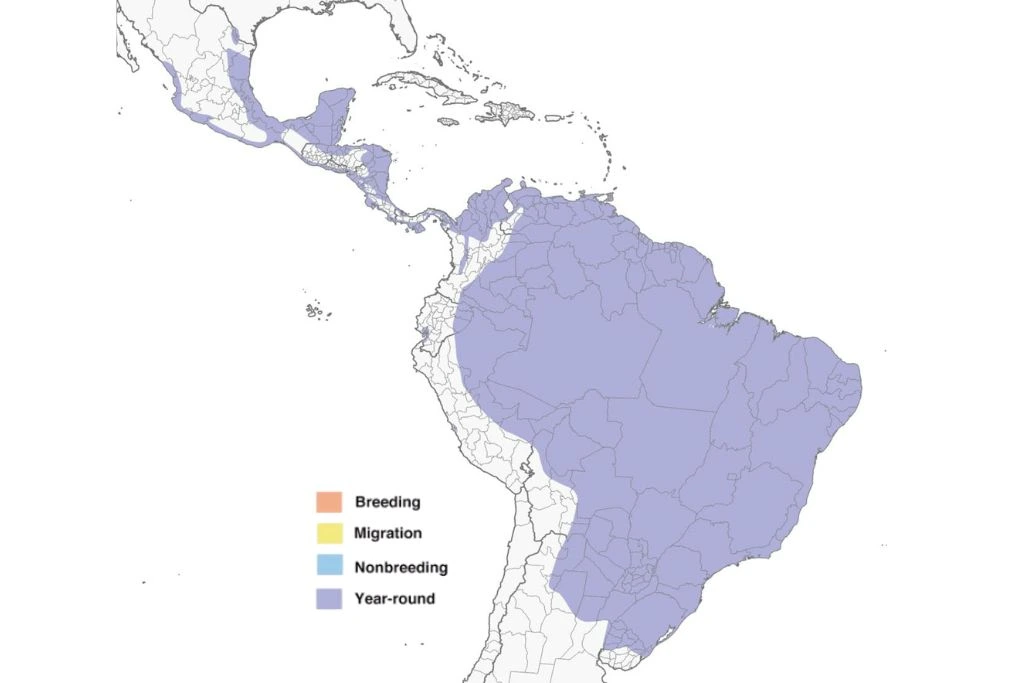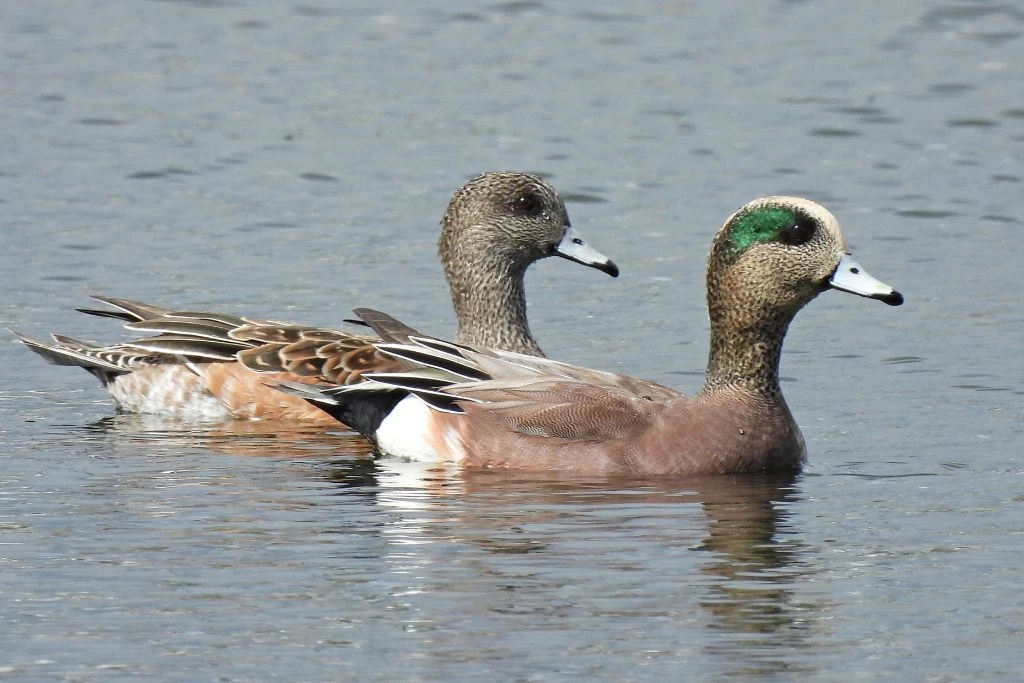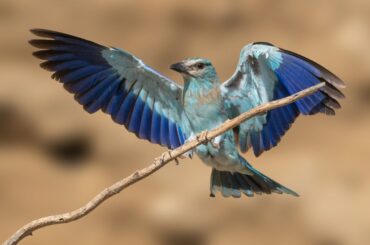Ducks are the most numerous members of the waterfowl family and are renowned for their kind temperament. These adorable water birds are maintained as pets and farmed for their meat and eggs.
Swans and geese are also members of the various subfamilies that contain ducks. However, some species’ family groups are up for question and have changed. They consume animals and plants and are omnivores, preferring insects, crabs, and tiny fish.
Most people are only familiar with a few types of ducks, so you’ll be amazed by the variety of duck species found in Florida.
1. Mottled Duck

- Kingdom: Animalia
- Phylum: Chordata
- Class: Aves
- Order: Anseriformes
- Genus: Anas
- Species: Anas fulvigula
Florida is home to mottled ducks all year round. 9% of winter and summer checklists have them. The Anatidae family of medium-sized, non-migratory birds includes the mottled ducks. Both sexes have light brown heads with a dark stripe running horizontally across the eyes.
Mottled ducks can be found in wet grasslands, flooded fields, irrigation ditches, and shallow coastal marshes. Mottled ducks frolic in the shallows in search of food. They mostly consume snails, fish, crabs, shrimp, and aquatic plants. They also consume berries, grass, grains, and seeds.

2. Mallard Duck

- Kingdom: Animalia
- Phylum: Chordata
- Class: Aves
- Order: Anseriformes
- Genus: Anas
- Species: Anas platyrhynchos
All year long, mallard ducks can be seen in Florida. Up to 3% of the state’s summer and winter lists include them. The male mallards have stunning green heads and are huge. They have gray bodies with brown chests, black near the tail, and brilliant yellow bills.
Most of the lower 48 states and the western coasts of Canada and Alaska are always home to mallard ducks. The northern parts of Mexico and the Southern United States are visited by species that nest in Canada and Alaska. Mallards are one of the most frequently seen and identifiable ducks that will gladly eat from ponds and rivers.

3. Blue-Winged Teal

- Kingdom: Animalia
- Phylum: Chordata
- Class: Aves
- Order: Anseriformes
- Genus: Spatula
- Species: Spatula discors
In Florida, blue-winged teals are often seen from October to April, though some linger all year. 10% of the winter checklists that bird watchers submit for the state include them. There is a noticeable blue spot on the shoulders whenever their wings are outstretched, bordered by green and white. Females lack recognizable white facial features but have the same crusty, brown pattern all over their bodies.
Ponds and lakes with projecting trees and rocks are ideal habitats for blue-winged teals, which can be found on coastlines with calm or still water. They also reside near marshes and other vegetation-rich areas with shallow water, such as swamps. You can locate them in northern grasslands and parklands during the nesting season.

4. Muscovy Duck

- Kingdom: Animalia
- Phylum: Chordata
- Class: Aves
- Order: Anseriformes
- Genus: Cairina
- Species: Cairina moschata
The muscovy duck is an invasive bird that lives all year in Florida. Dark brown, white, and black coloration combinations can appear on domesticated muscovy ducks. The red, wart-like patches on the faces of both varieties of muscovy ducks are the same.
Most muscovy ducks are found in Mexican, Central American, and South American countries. However, domesticated muscovy ducks that have escaped can be found in numerous places. Wild Muscovy ducks forage in shallow marshes while on their own. Humans can comfortably feed domesticated muscovy ducks in parks.

5. Wood Duck

- Kingdom: Animalia
- Phylum: Chordata
- Class: Aves
- Order: Anseriformes
- Genus: Aix
- Species: Aix sponsa
Wood ducks are present all year in Florida. The magnificent green heads of male wood ducks have a prominent crest on the back, black and white patterns, and red eyes. Females have grayish-brown heads, brown bodies, and white borders surrounding their dark eyes. On their wings, they have blue speculum patches.
The Eastern United States, the Pacific Coast, and portions of the Northwest are home to wood ducks. They are common in wooded wetlands, and they consume seeds, fruit, and insects—typically in the water, though they will also forage in fields and forests—as well as other small animals. Wood ducks typically build their nests in tree cavities up to 60 feet above the ground and extremely close to bodies of water.

6. Northern Shoveler

- Kingdom: Animalia
- Phylum: Chordata
- Class: Aves
- Order: Anseriformes
- Genus: Spatula
- Species: Spatula clypeata
Northern shovelers are most commonly seen in Florida during the cold season, from October to April, and appear on 3% of checklists during this time. Male northern shovelers can be identified by their large, black beaks that resemble a spoon and their green heads, which make them dabbling ducks. The shoulders of females have a blue patch, and their big orange beaks are mottled brown.
The Southern US and the Pacific and Atlantic Coasts north to Canada are where northern shovelers spend the wintertime. In the summer, they move to the Northwest US and the western portion of Canada to breed. In shallow, still water, you can locate social groups of northern shovelers. They eat crustaceans, invertebrates, and some seeds, and they remove them from the water by agitating the bottom and moving their bills back and forth.

7. Green-Winged Teal

- Kingdom: Animalia
- Phylum: Chordata
- Class: Aves
- Order: Anseriformes
- Genus: Anas
- Species: Spatula carolinensis
Wintering in Florida, green-winged teal are typically seen from November to March. They are small ducks that dabble and have a green stripe that runs all along the sides of the skulls of males. Their bodies are grayish, while the remainder of their heads is brown. Females have a golden tail streak and are brown. The green wing patch is present in both males and females.
Most green-winged teal migrates to the Southern US states and the Pacific Coast from their breeding sites in Alaska, Canada, and the Northern United States. However, some ducks spend the entire year close to the Rocky Mountains. Massive flocks of approximately 50 thousand green-winged teals can be seen on flooded terrain and shallow ponds. They consume seeds and invertebrates as food.

8. American Wigeon

- Kingdom: Animalia
- Phylum: Chordata
- Class: Aves
- Order: Anseriformes
- Genus: Mareca
- Species: Mareca americana
American wigeons are tiny ducks with white crowns on the males and green bands on the underside of their heads. They are grayish-brown overall. Females have grayish-brown heads and are brown overall. The beaks of both males and females are pallid.
American wigeons breed most frequently in Alaska, Western Canada, and the Northwest United States. They spend the winter on the Pacific and Atlantic coasts and in Southern and Central US. You can see American wigeon foraging on plants both in the water and on the ground in wetlands, meadows, and ponds. They also consume invertebrates and insects.

9. Northern Pintail

- Kingdom: Animalia
- Phylum: Chordata
- Class: Aves
- Order: Anseriformes
- Genus: Anas
- Species: Anas acuta
Florida has year-round sightings of northern pintails, but they are most frequent from November through February. These ducks are renowned for having long, sharp tails. Males have stunning brown heads, contrasting with a vertical white stripe running down their necks. Females have complex scale patterns on their brown bodies.
Northern pintails were born in Canada, Alaska, and the Midwest before migrating to the southern and coastal areas of the US. Northern pintails also cohabit with other duck species in large marshes, meadows, grasslands, and even agricultural fields. They are known to venture into open water with some other ducks, but they mostly feed at the borders of lakes and ponds. They will go to brackish marshes, protected estuaries, and coastal lagoons during the winter.

10. Cinnamon Teal

- Kingdom: Animalia
- Phylum: Chordata
- Class: Aves
- Order: Anseriformes
- Genus: Spatula
- Species: Spatula cyanoptera
Although not frequently seen in Florida, cinnamon teal is seen there between September and April. Male breeding cinnamon teal is the cause for the name of these birds. During the nesting season, they have a cinnamon-colored coat, and sometimes even their eyes are red. They have a scaly, reddish-brown patch on their backs.
Before wintering in Mexico and South America, cinnamon teals were nested in Western US and Southwest Canada. In the Southwest US, Mexico, and South America, some ducks remain all year long. They eat seeds, herbs, and aquatic species. In deeper waters, they can decide to trawl slightly below the surface in search of submerged plants.

11. Lesser Scaup

- Kingdom: Animalia
- Phylum: Chordata
- Class: Aves
- Order: Anseriformes
- Genus: Aythya
- Species: Aythya affinis
While there have been observations throughout the year, Florida’s winter, from November to mid-May, is when lesser scaups are most frequently seen. They are standard-sized diving birds that resemble greater scaups and are sometimes confused with them. Lesser scaups are distinct due to the small cluster of hairs on the apex of their heads. Compared to greater scaups, it gives them a steeper-looking head.
Lesser scaup can be found in sizable lakes, streams, ponds, and reservoirs. During the winter, they typically congregate in large groups by the thousands, and, from a distance, they frequently resemble floating plants. They dive further into the water and comb the bottom for mollusks and clams, which they eat in large quantities. They also dangle their toes in the water, searching for pondweeds, bulrushes, wild celery, and wild rice.

12. Ring-Necked Duck

- Kingdom: Animalia
- Phylum: Chordata
- Class: Aves
- Order: Anseriformes
- Genus: Aythya
- Species: Aythya collaris
Ring-necked ducks are seen in 5% of winter checklists and primarily in Florida from November to mid-April. Some, nevertheless, have been observed here all year. The medium-sized ring-necked duck has a white breast and belly, a gray bill fringed with white and black, and a black chest and back. It also has a steep black forehead.
Breeding occurs in Canada and the Northeastern US. After that, ring-necked ducks migrate to Mexico, Northern Central America, the Caribbean, and the south and west of the US. Rivers and small, shallow ponds are where you can locate ring-necked ducks. Wooded ponds in forests may be used as breeding grounds. They consume aquatic plants like pondweed as well as plants that are submerged in the water.

13. Bufflehead

- Kingdom: Animalia
- Phylum: Chordata
- Class: Aves
- Order: Anseriformes
- Genus: Bucephala
- Species: Bucephala albeola
In Florida, buffleheads can be seen from November to April, though some remain until June. They are small birds with bulbous heads, thus the word “bullheaded” in ancient Greek. The enormous white patch behind the eyes of male buffleheads makes them easy to identify. Only the bulbous head distinguishes female buffleheads from males.
Before migrating to the United States, Northern Mexico, and the Pacific Coast of Canada, buffleheads were primarily bred in Canada. In the Midwest and the Appalachians, they can be spotted during migration. Buffleheads hunt for food mostly through diving. While submerged, they capture gastropods, crustaceans, and predatory insects to feed.

14. Redhead

- Kingdom: Animalia
- Phylum: Chordata
- Class: Aves
- Order: Anseriformes
- Genus: Aythya
- Species: Aythya americana
In Florida, redheads have been sighted all year round, but November through April are the most prevalent. These standard-size diving birds resemble redheads. They have a bright red head contrasting with their gray body, black chest, and throat. They have a black tip on their blue-gray bill.
Redheads can be found in wetlands, open lakes, croaky ponds, and bays with water depths sufficient for diving and sifting through vegetation. Although they don’t dive as far as other ducks, redheads dive for food. When it’s not breeding season, they consume much plant life. Their diet consists of grasses, water lilies, pondweed tubers, and seeds.

15. Ruddy Duck

- Kingdom: Animalia
- Phylum: Chordata
- Class: Aves
- Order: Anseriformes
- Genus: Oxyura
- Species: Oxyura jamaicensis
Ruddy ducks are typically visible in Florida from November to March throughout the winter, while some remain there all year. Male ruddy ducks are a vibrant reddish-brown color during the breeding season as opposed to their bland, grayish coloring during non-breeding. Females have cheek patches that resemble males but are grayish with dark brown crowns. They also have a horizontal, light brown line across their cheeks.
Divers, ruddy ducks spend their time swimming and diving underwater in search of food. They consume aquatic vegetation, such as aquatic plant seeds and roots, as well as aquatic insects, mussels, and crustaceans. They may also consume small fish and mollusks because they skim the water’s surface and filter muck and fluid through their bills to eat.

Frequently Asked Questions
What Is Florida’s Most Common Duck?
In central Florida, mallard ducks, Florida mottled ducks, black-bellied whistling ducks, and wood ducks are a few of the most prevalent duck species.
What Are Florida’s Black and White Ducks?
Wild muscovy ducks are forest inhabitants that build their nests in tree cavities. They are glossy black with striking white wing patches. In the 1980s, their distribution increased in Texas. Feral populations can also be seen in Florida.
Where in Florida Can I Find Ducks?
Bluebills, known as scaup, assemble in saline marshes and lagoons. Additionally, various wetland habitats in Florida are home to mottled ducks, wood ducks, black-bellied whistling ducks, and fulvous ducks.
What Is the Name of Florida Ducks?
A distinctive subspecies in peninsular Florida is the Florida mottled duck, sometimes known as the Florida duck or Florida mallard.
What Exactly Are the Ducks in Miami?
Muscovy duck families are frequently seen in Miami Springs, trundling along major roads, byways, and canals.
Is Duck Hunting Permitted in Florida?
Yes. But to hunt waterfowl, hunters must also have a hunting permit, a Florida wildlife permit, a free migrating bird permit, and a federal duck stamp.
Do Alligators Eat Ducks in Florida?
Yes. Alligators frequently consume ducks and other kinds of birds. They only have a few food preferences. Regular meals also include fish and smaller mammals.
Conclusion
Ducks are abundant and come in various kinds in Florida. While some can be seen during migration, others make Florida their year-round home. A few species exclusively migrate to Florida during the winter.
Most of the duck species found in Florida are members of the dabbling or sea duck families. Each of them has a distinct size, form, and plumage. You will know what a duck looks like the next time you see one.





